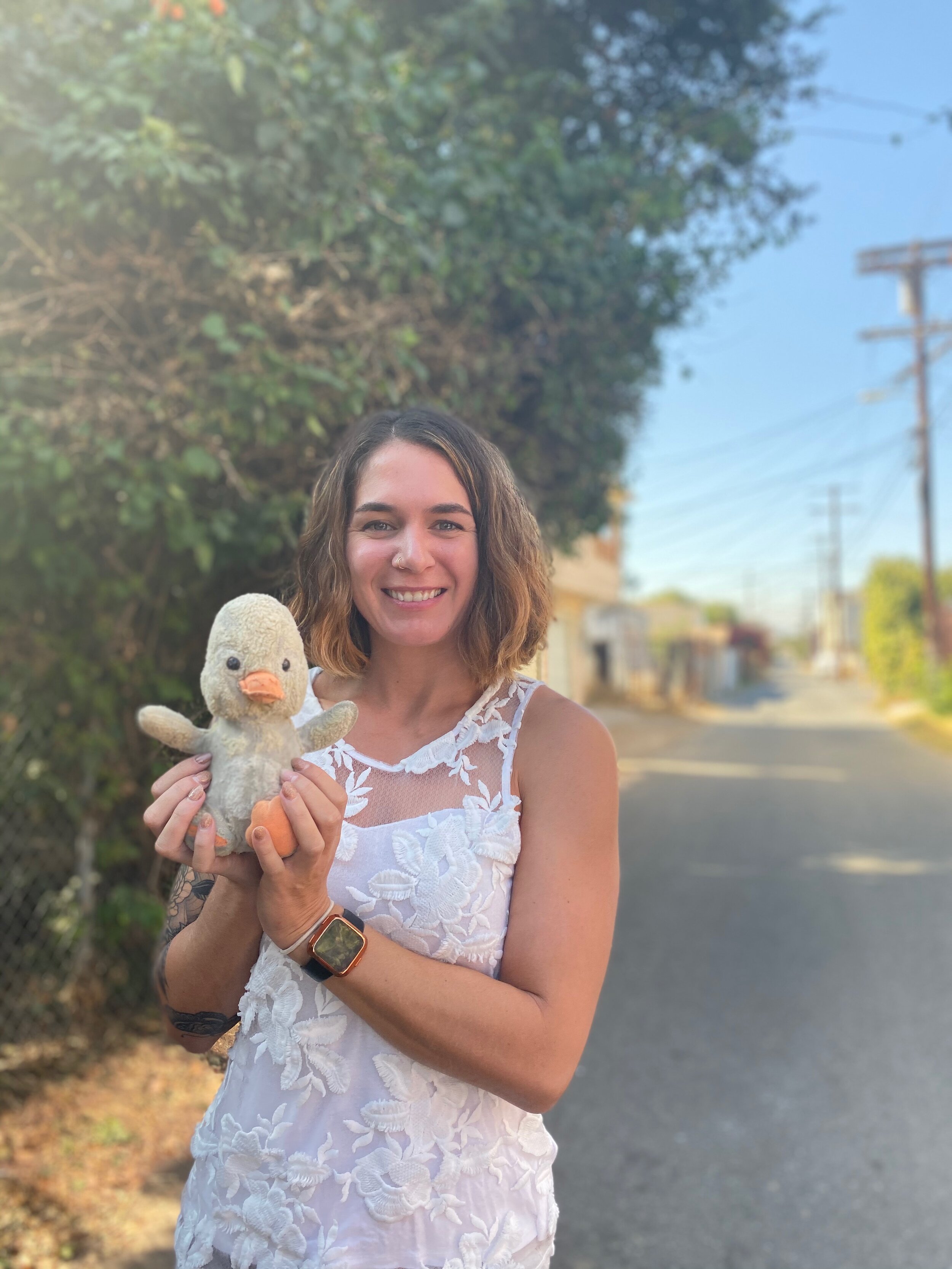“I have heard trauma being described as anything that happens too fast, too soon, and/or too much such that those who endure it are not prepared to manage and integrate it effectively. I would add that another aspect of trauma is when we cannot hold the complicated and contradictory nature of these ‘TOO anything’ experiences. ”
It was early Thanksgiving morning. I woke up with a feeling of dis-ease. My body lay warm under bedding but the air around my face felt chilled, more by an eerie presence than the cool autumn air of our bedroom. I was on my back and paralyzed; legs pressed together as if attempting to merge my two human legs into a mermaid’s tail and arms pinned – one bent over my chest and the other pulling tight at my side. The only muscles that seemed to obey my mind’s command were the twelve that control the movement of my eyes. I peered to my right.
My fiancée laid gently breathing with his back inches from my unmovable figure. His presence was familiar but my eyes seemed to catch a lesser known form which almost hovered over his blanketed silhouette. I couldn’t quite make it out, but it felt human. My fears lay less about sensing this supernatural entity (as it felt benevolent rather than threatening) and more in the novelty of my presentation of symptoms.
I immediately began to diagnose and rationalize what was happening. “Mild visual hallucinations co-occurring during episodic sleep paralysis,” I thought. “Just wait a few moments…this will pass...average duration of this phenomenon is under 3 minutes.” I even justified the occurrence to myself: “What a year this has been, of course, I’d experience something like this. I bet there is a strong correlation between stress and sleep paralysis.”
Soon enough the hovering figure and my paralysis dissipated. First to reappear was the control of my toes. And as soon as I could utilize my arms and trunk, I turned to my bedside table and picked up my phone: 2:22am it read. “Odd” I thought and I noted this would be a exciting story to share with my partner, as it is customary for us to share our previous night’s dreams with one another in the morning.
But before our alarm could do its work, I woke up to my partner wide-awake and propped up on his elbow. It was still dark out. “What’s wrong?” I asked.
“It happened,” he replied. “Grandpa’s gone. I know it”.
No more than 10 seconds later his phone rang. It was his mom. She told us Grandpa Joe (her father) had passed away early that morning.
“We are the paradox – continual growth amid the destruction. ”
After spending a few minutes of sharing grief and memories with his mom, he hung up the phone and we held one another. While this wasn’t a surprise (Grandpa had been diagnosed with Covid-19 two weeks ago and at 95-years-old statistics were against him), as with any passing, the finality hit hard and was compounded by the difficult reality of this pandemic: his family could not be physically with him as he passed.
I have heard trauma being described as anything that happens too fast, too soon, and/or too much such that those who endure it are not prepared to manage and integrate it effectively. I would add that another aspect of trauma is when we cannot hold the complicated and contradictory nature of these ‘TOO anything’ experiences. When terrible things happen, no matter how terrible things get, paradoxically there are simultaneously positive elements to come across… if we are able to hold the complexity of the whole situation. In other words, the ‘TOO anything’ of the trauma response makes it harder to see the ‘and’ in any situations – the good with the bad, the beautiful with the ugly, and joy with the pain.
And this year has been a consummate paradox: never-ending and passing in the blink of an eye; interpersonally isolative yet at times collectively connecting; communally traumatic while somehow showcasing our basic resiliency and unfettered hope. Though this pandemic may feel unprecedented (and in ways it is), this experience has made me reflect and imagine how traumatic events actually scaffold human existence throughout history.
Given the unknown intricacy of our natural universe, occurrences that are ‘TOO anything’ are experienced all the time on an individual and societal level. Natural disasters, war and persecution, death and destruction – one may say our joys are the exception to an overall experience of suffering. And yet, despite being continually traumatized, we (as a whole) carry on and continue to grow/mature/evolve. We are the paradox – continual growth amid the destruction.
This year has brought us a lot of ‘TOO anything’ experiences. After losing my partner’s grandfather on Thanksgiving morning, we then met with my family for a socially-distanced backyard Thanksgiving lunch where I blew my 92-year-old grandmother a kiss from more than 6 feet away. The pain of losing one family member was punctuated by the gratitude of being with family and that joy of being together for Thanksgiving was marred with the physical constraints of social distancing. I sat in the paradox of it, me and my partner at our own fold-out table situated more than 6 feet from the fold-outs of other households. My feelings vacillated minute by minute – the muck and the magic; the pleasure and the pain; the love and the loss.
I recall my feelings at the start of 2020. There was so much hope for the future. Cue 11 months later: a contentious election, a societal reckoning of social injustice, and resurgence of Covid-19 cases, which now hits (for me) even closer to home. I am overwhelmed and disheartened. Some days I struggle to show up for myself… let alone my family, friends, and clients. And yet I’ll continue to hold the paradox of this experience and try to remember that good things can happen while terrible things are underway. As Grandpa Joe was known for saying: “Keep your eyes on the horizon.” I’ll keep looking up and out, taking it all in, and letting each day provide whatever experience is meant for me to go through. I hope that in the midst of your overwhelm, you can allow for the paradox and keep your eyes on the horizon.
Lauren Ziel, MSW is a Registered Associate Clinical Social Worker, ASW #76483, working under the supervision of Michelle Harwell, LMFT. Through the use of movement and mindfulness, Lauren develops specialized treatment for anxiety, depression, eating disorders, challenges in life-stage transitions, relational difficulties, and identity/intrapersonal development.





















